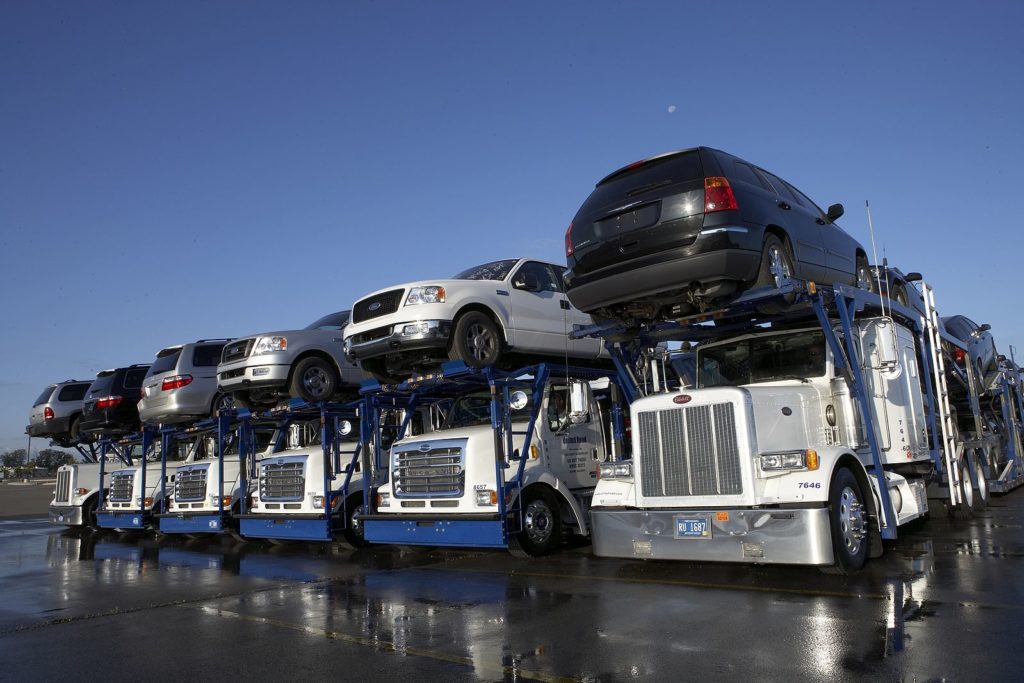Because of the numerous supply chain problems with everything from food to consumer goods, many of us have been carefully planning our purchases ahead of time in a multistep process that involves budgeting, prioritization, checking inventories for in-stock notices, and using upgraded shipping options to avoid USPS delays. Well, now we can add cars to the growing list of goods for which we need these pandemic-specific shopping techniques.
The entire US is facing a temporary car shortage, brought on by a simultaneous increase in automobile demand and a slowing of production. So if you’ve been thinking about investing in a new car — either as a family vehicle or a bug-out prep, the best way to go is probably to make do with what you have or wait until the fall.
What does the shortage look like?
Back in April, a few weeks after most of the United States economy came to a screeching halt, many news outlets said we’d see a collapse in used car prices. People were cutting spending in advance of an economic downturn, and it seemed like no one would be spending money for a while. Then, auto auctions closed, leaving tons of used cars with no one to sell them or buy them.
Suddenly, the online market was flooded with used cars. In this saturated market, used car prices fell when dealerships opened back up in May, and the start of June. “However, in the past 60 days, used car prices have risen substantially as new vehicle supply has dwindled,” said Joe Akers, Director of Operations for Cowles Nissan. “We will now see a notable shortage of new vehicles during the summer.”
We’ve now entered a new phase of pandemic shortages. There aren’t enough used cars for a few reasons:
- New car manufacturers had to shut down due to COVID earlier this spring, so new vehicle supply is low.
- To get rid of that initial flood of used cars, dealers set wild incentives to boost sales — some have been selling cars at 0% APR for several years, Akers said — and those incentives are driving demand.
- The used car market usually has cars in it that people have leased and then returned to the dealer. But many dealers extended leases when they had to close this spring, so those cars aren’t up for sale yet.
- Components and parts that come from other countries are delayed due to supply chain issues. Lauren Fix from the Car Coach said it can take up to 12 weeks right now to get a new part.
“In the immediate future, used car prices will remain high due to a lack of new vehicle supply,” Akers said. “In addition, aggressive new vehicle incentives make this the wrong time to buy used. The best window of opportunity has passed (early in the pandemic when the auctions closed), which is unfortunate if you were looking to get a great deal.”
Meaning — what’s good news for the American economy, builders, and car sellers is bad news for those who might want to buy a new car. The auto industry (and the home-building industry) has rebounded more than any other since the pandemic shut down in April. A rebound is good news, but that high demand and low inventory means high prices for consumers.
Why's the U.S. economy holding up as well as it is? 2 sectors lifted by low interest rates are big reasons: homebuilding and autos. https://t.co/b6EBqA6tkj via @DoubleTGolle @MaeveSheehey @economics pic.twitter.com/mj9DZDlf7V
— Steve Matthews (@SteveMatthews12) August 5, 2020
The case of Carvana
Carvana is an example of a company that seems built for the COVID-19 pandemic. It’s like a used car dealership that exists online. You pick a used car, buy it with the click of a button, and it comes to your house on a truck. Like Postmates but for cars.
Yesterday, Carvana shared its second-quarter earnings with shareholders. In a letter to shareholders, the company announced it’s sold 55,098 cars since April and increased both profit and revenue compared to this time last year.
Carvana execs also, however, shared that they were “operationally constrained,” and the number of cars they could sell was dwindling.
Cool slide from the Carvana shareholder letter. Trend is applicable to other companies/industries imo: pic.twitter.com/AQu5TX0dhj
— Conor Sen (@conorsen) August 5, 2020
Basically, Carvana is growing as a company but can’t catch up with inventory.
“It’s important to recognize that Carvana is a used-only dealership,” said Zach Shefska, the co-founder and CEO of Your Auto Advocate. “They are struggling to buy vehicles at the auto auctions because wholesale prices on used vehicles have jumped by an astronomical amount over the past few weeks.”
Why would used car prices jump an astronomical amount?
”Because new car manufacturers have not been able to produce enough new vehicles to meet demand,” Shefska said. “This has led to more used cars being purchased, driving up prices across the board.”
Wait until the end of September or early October to buy a new car
If you’re thinking about buying a car, the time to buy is not right now. Demand is way higher than supply, and both dealerships and car manufacturers need time to catch up. The time to buy could be soon, however.
“Once manufacturers can get back to pre-pandemic production levels (say that five times fast), we should see all car prices level out,” Shefska said via email. “Our best guess is that the right time to buy will be in the fourth quarter of this year.”
Pat Ryan, founder of the CoPilot app, agrees. He said that future buyers should mark their calendars for the last week of September or first week of October, when car sales will “ease into a buyers market for Q4.” Ryan said there’s two things to watch for:
- As many as 560,000 extra cars could come off their leases this fall. Those leases were deferred due to COVID-19, but they’ll be returned to dealerships and sold as used this fall.
- Because people are traveling less, car rental companies are struggling. Ryan said another 250,000 rental cars could come into the used car market. At least 175K of those will be old Hertz cars.
“Most likely, you’ll have to be a bit flexible if you plan on shopping for a vehicle this summer or fall,” Akers said, “but that’s become a bit of a mantra for COVID-life for almost all businesses and interactions.”


You are reporting the comment """ by on